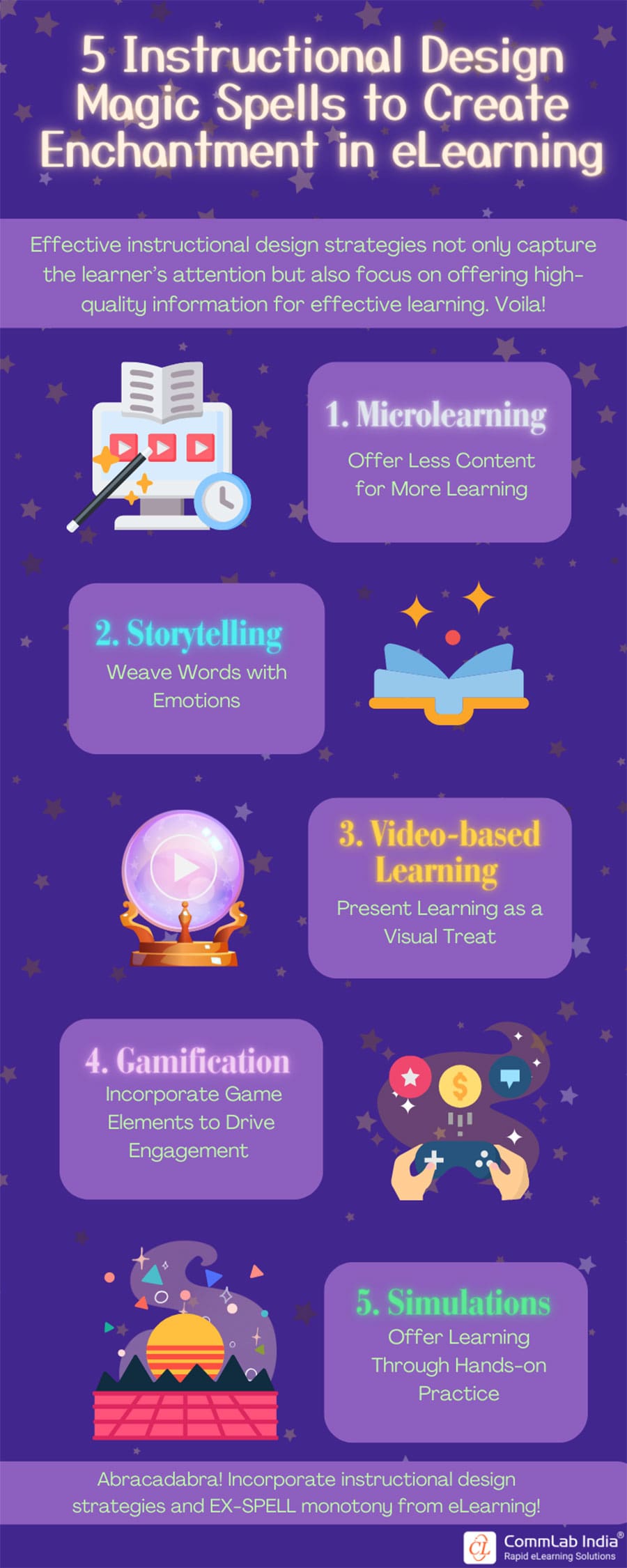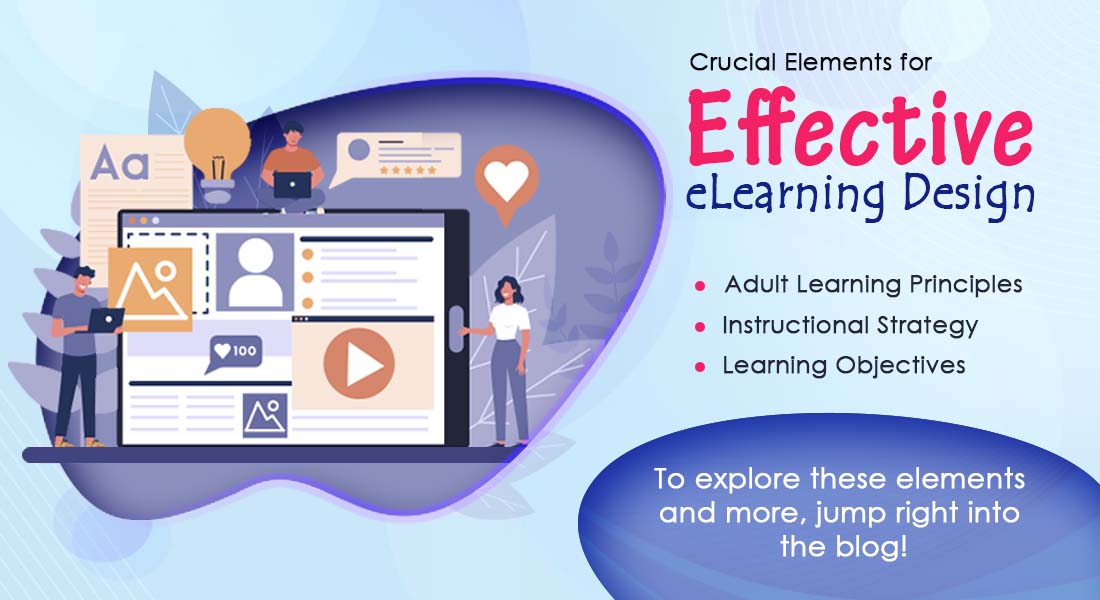5 Instructional Design Strategies to Create Enchantment in eLearning Courses [Infographic]
![5 Instructional Design Strategies to Create Enchantment in eLearning Courses [Infographic] 5 Instructional Design Strategies to Create Enchantment in eLearning Courses [Infographic]](https://blog.commlabindia.com/hubfs/blogs/instructional-design-strategies-top-infographic.jpg)
The right instructional design strategy works like a magic wand in the realm of eLearning. It possesses the power to transform a mundane learning experience into something enchanting, where learners immerse themselves in the learning. With instructional design strategies, instructional designers can create captivating eLearning courses where learners actively participate, absorb knowledge, and find joy in the learning journey.
5 Incredible Instructional Design Strategies that Bring Magic to eLearning Courses
Microlearning
Microlearning breaks down learning content into brief, engaging formats, comprising compact, standalone units, each designed to address a specific learning objective. These succinct learning modules can take various forms, such as videos, animations, quizzes, infographics, eBooks, and more making them highly efficient for conveying knowledge.
- Makes it simple to consume information
- Maintains learner engagement
- Allows for self-paced learning
→ Download Now: Instructional Design Strategies to Design Engaging eLearning Courses [eBook]
Storytelling
Storytelling in eLearning is more than just including fictional narratives. Rather, it entails presenting learning content in the form of a well-structured story that corresponds to the intended learning objectives. To accomplish this, it is critical to have a thorough understanding of your learners and to create a contextually appropriate storyline with characters who seamlessly integrate with the subject matter, resulting in enhanced knowledge retention.
- Makes training engaging
- Enhances knowledge retention
- Fosters an emotional bond
Video-based Learning
Video-based learning involves using videos to teach new skills or technology. Without a doubt, videos in learning are a highly effective and efficient method of knowledge transfer. They incorporate audio, visual elements, animations, and other elements to deliver a cohesive and immersive learning experience to learners.
- Allows responsive learning
- Offers on-demand learning
- Enhances productivity and engagement
Gamification
Games in learning are highly captivating, and gamification extends these gaming attributes and mechanics to non-game scenarios. This strategy constructs an environment reminiscent of games, compelling learners to employ their knowledge in authentic scenarios and complex problem-solving tasks. The incorporation of game elements like leaderboards, badges, rewards, points, and levels, significantly boost learner motivation due to its remarkably interactive nature.
- Fosters healthy competition
- Offers interactive learning experiences
- Provides progress rewards
Simulations
Simulations in eLearning mimic the conditions and environment of a real-life work scenario, where learners can experiment, learn, and practice without worrying about making mistakes, which fully equips them for the kinds of tasks they will come across in their workplace. Training time and cost can also be significantly reduced by introducing simulations in training.
- Offers Hands-On Experience
- Encourages Practice Until Perfection
- Support Immersive Learning
Summing it up!
Instructional design strategies serve as the backbone of effective eLearning courses. By carefully structuring eLearning courses, instructional designers can optimize the learning experience. This results in improved comprehension, retention, and overall success in achieving learning objectives leading to the creation of high-quality eLearning courses. Do you want to enhance your eLearning game with impactful instructional design strategies? Our eBook is here to offer you insights to create learner-centric engaging eLearning courses.






![3 Elements of a Well-Defined Learning Strategy [infographic]](https://blog.commlabindia.com/hubfs/Imported_Blog_Media/learning-strategy-elearning-courses-infographic-cover.jpg)
![Elements of a Good E-learning Course GUI [Infographic]](https://blog.commlabindia.com/hubfs/Imported_Blog_Media/elearning-course-gui-elements-infographic.jpg)